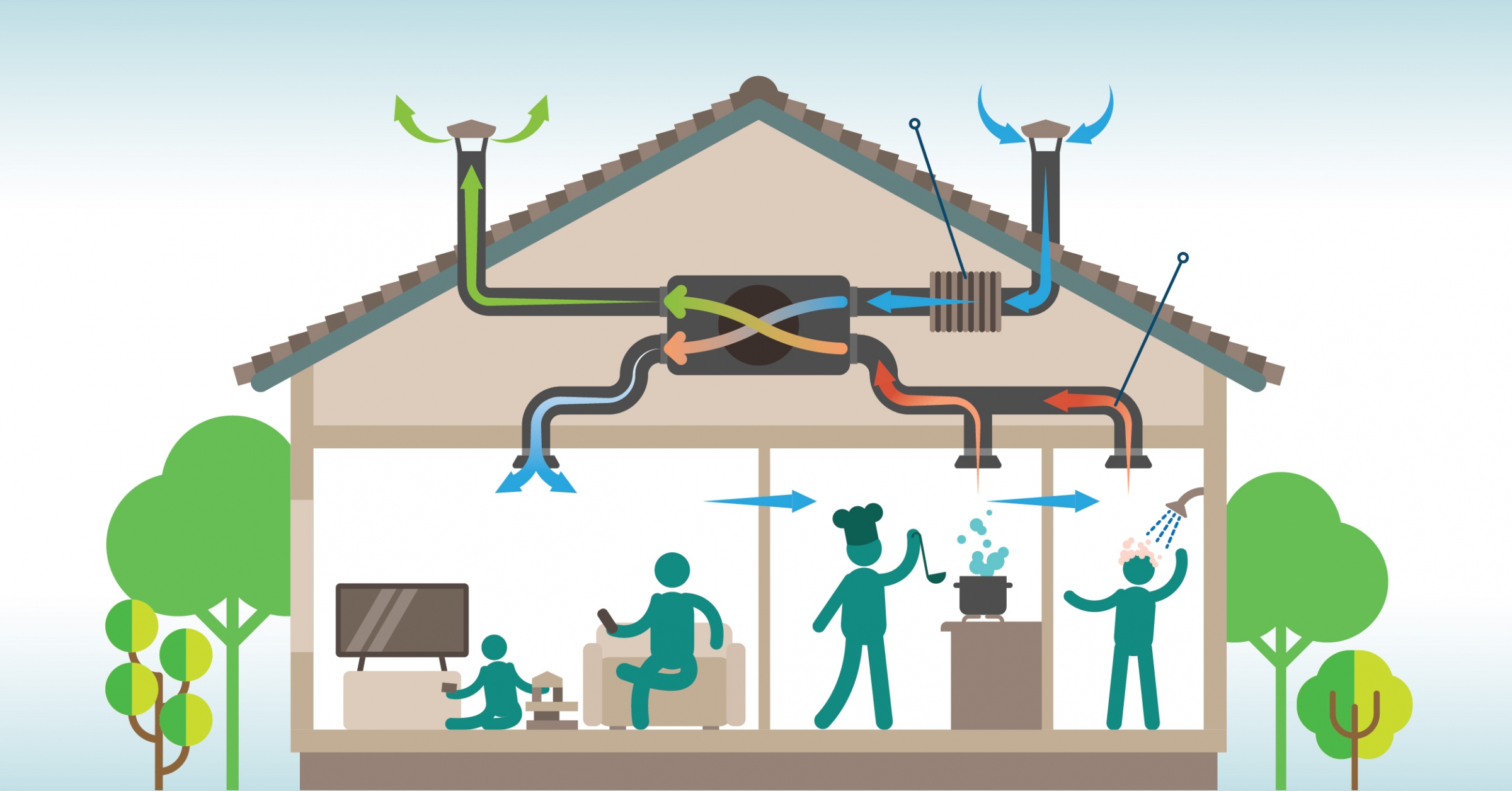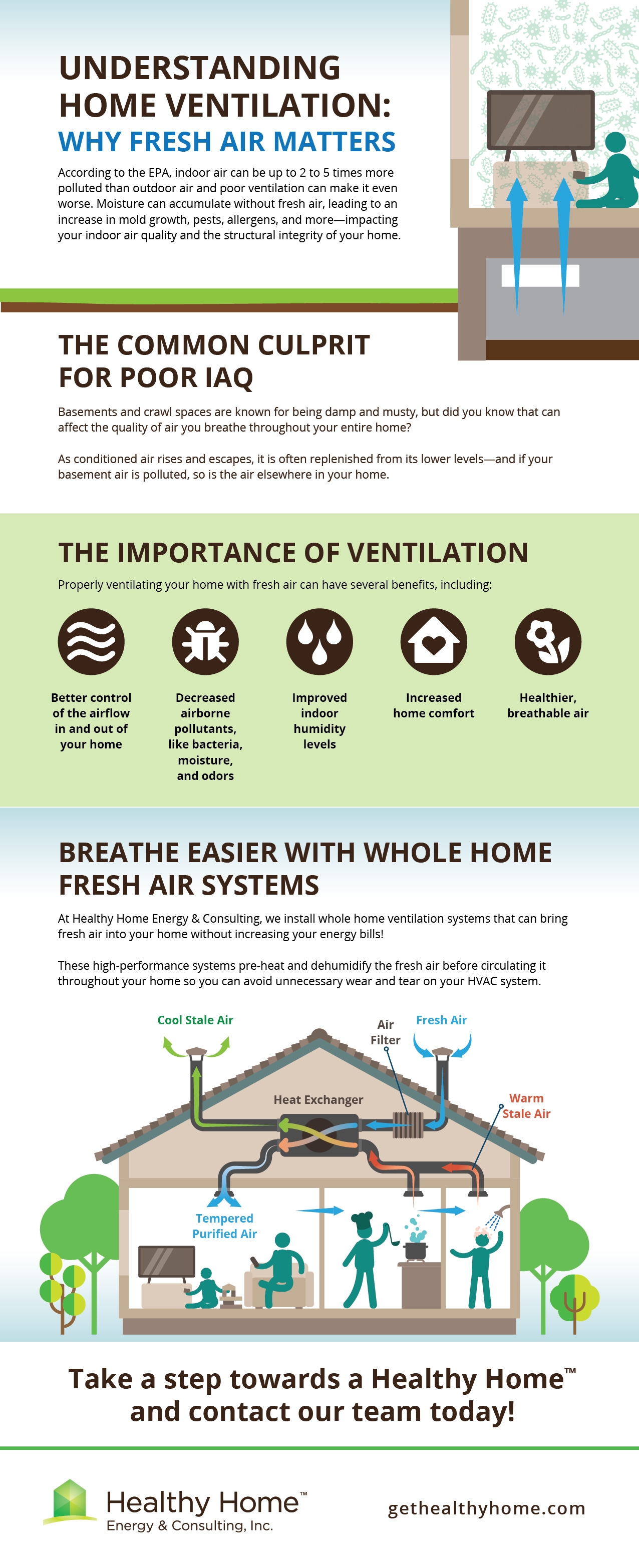Home Ventilation Melbourne Safety Tips for Cleaner Indoor Air
Discovering Cutting-edge Solutions for Optimum Home Ventilation Systems
Home air flow plays a crucial function in maintaining wellness and convenience within living areas. With improvements in modern technology, cutting-edge options are emerging to optimize these systems. Smart air flow, power healing ventilators, and advanced filtration are improving how air high quality is managed - Home Ventilation Melbourne. However, the assimilation of these technologies raises concerns about their efficiency and flexibility in varied home settings. What ramifications do these developments hold for future living criteria?
The Value of Home Air Flow for Health and Convenience
Usually forgotten, home air flow plays a vital function in maintaining both wellness and comfort within household areas. Appropriate air flow is vital for the blood circulation of fresh air, which assists to weaken interior contaminants such as volatile natural substances, irritants, and odors. Without proper air flow, these impurities can gather, causing respiratory system concerns and other health issue. Additionally, efficient ventilation contributes to controling moisture levels, protecting against mold and mildew development and structural damages. By making sure a balanced exchange of air, citizens can enjoy a more pleasurable indoor environment, boosting overall wellness. Furthermore, adequate ventilation can enhance energy effectiveness by decreasing the requirement for extreme home heating or air conditioning, ultimately leading to reduced utility bills and an extra sustainable living space.
Smart Air Flow Systems: Harnessing Technology for Effectiveness
Smart ventilation systems represent a significant development in home air management, leveraging IoT combination for boosted control. These systems not only advertise power efficiency yet likewise offer remote monitoring capabilities, allowing customers to enhance their interior atmospheres flawlessly. By using modern technology, property owners can accomplish enhanced air top quality while minimizing power consumption.
IoT Combination Benefits
Just how can IoT integration change traditional air flow systems into extremely effective smart remedies? By including Net of Things (IoT) technology, air flow systems can achieve real-time tracking and control, boosting their operational efficiency. Sensors positioned throughout a home gather information on air temperature, high quality, and moisture, permitting automated adjustments based upon present conditions. This immediate responsiveness leads to improved indoor air top quality and convenience levels. Furthermore, IoT-enabled systems can interact with other clever home gadgets, creating a natural ecological community that optimizes power usage. Customers can likewise accessibility and manage their ventilation systems remotely by means of mobile phones, offering ease and enhanced control. In general, IoT combination stands for a substantial improvement, bringing knowledge and adaptability to conventional air flow methods.
Power Efficiency Features
As energy performance becomes a vital emphasis in modern home layout, progressed air flow systems use innovative attributes that considerably minimize energy consumption. These clever air flow systems use sensors to keep track of interior air quality, temperature level, and humidity degrees, automatically changing air flow to preserve excellent conditions. By utilizing power recuperation ventilators (ERVs), they record and recycle energy from outbound air, minimizing heating and cooling needs. Variable rate fans better enhance performance by changing their operation based upon real-time needs, preventing unnecessary energy waste - Home Ventilation Melbourne. In addition, programmable timers and occupancy sensing units assure that ventilation runs only when essential, adding to lower energy bills. Jointly, these attributes stand for a considerable innovation in producing lasting and energy-efficient living atmospheres
Remote Surveillance Capacities
What advantages do remote surveillance abilities offer modern-day home ventilation systems? These capacities allow house owners to track indoor air quality and system performance in real time, boosting total performance. By offering information on humidity, air, and temperature level toxins, wise ventilation systems allow positive changes, making certain optimal conditions. In addition, remote surveillance promotes upkeep notifies, identifying potential concerns before they escalate, therefore decreasing repair prices and downtime. Individuals can access system analytics with mobile applications, enabling for convenient control also when away from home. This technical combination not only advertises energy efficiency but additionally adds to a healthier living setting. Inevitably, remote monitoring capacities represent a significant advancement in home air flow, lining up with the growing need for smart home modern technologies.
Power Healing Ventilators: Optimizing Energy Financial Savings
Power recovery ventilators (ERVs) play a crucial role in improving home energy effectiveness with effective heat exchange. By moving thermal energy between outgoing and inbound air, these systems substantially decrease general power intake. This ingenious technique not only preserves interior air quality but likewise adds to reduce energy costs.
Efficiency of Heat Exchange
While maintaining interior air top quality is crucial for health and comfort, the effectiveness of warmth exchange in energy recovery ventilators (ERVs) plays a crucial function in making best use of energy savings. The main feature of an ERV is to transfer heat and wetness between inbound and outbound jet stream, which optimizes indoor conditions while lessening energy loss. High-efficiency warmth exchangers can substantially lower the lots on home heating and cooling down systems by recovering energy that would or else be thrown away. The performance of these systems is frequently measured by their core temperature currency exchange rate, which can vary based on layout and products utilized. By concentrating on sophisticated heat exchange technologies, property owners can improve Going Here their ventilation systems, bring about boosted power effectiveness and cost decreases gradually.
Decreased Energy Intake
Lowering power consumption is a key advantage of energy recovery ventilators (ERVs), as they efficiently reuse thermal energy from exhausted air. By moving warmth between outbound and incoming jet stream, ERVs lessen the need for additional home heating or air conditioning, bring about considerable energy savings. This procedure not only reduces energy expenses but also lessens the ecological influence associated with higher power usage. In enhancement, ERVs maintain regular indoor air quality without compromising thermal convenience, creating a well balanced living environment. By incorporating ERVs into home air flow systems, house owners can attain higher energy effectiveness, enabling a sustainable strategy to indoor air administration while gaining from lower power costs. Eventually, ERVs stand for a compelling service for energy-conscious customers.
Advanced Filtration Technologies for Cleaner Indoor Air
As indoor air top quality becomes progressively identified as an important part of health and wellness, progressed filtering technologies are becoming crucial tools for guaranteeing cleaner settings. These technologies include high-efficiency particulate air (HEPA) filters, triggered carbon filters, and electrostatic precipitators, each made to effectively catch air-borne contaminants, irritants, and unpredictable natural compounds (VOCs) HEPA filters can catch bits as tiny as 0.3 microns, substantially decreasing allergens like dust termites and family pet dander. Turned on carbon filters master adsorbing smells and chemical vapors, adding to a fresher interior ambience. In addition, electrostatic precipitators use electrical charges to remove bits, supplying an energy-efficient option. By integrating these sophisticated filtration systems, house owners can improve indoor air high quality and advertise much healthier home.
The Duty of Sensing Units in Enhancing Air Flow and High Quality
Exactly how can sensors transform the management of interior air top quality? Sensors play a crucial duty in enhancing air flow and improving interior settings. By constantly keeping an eye on aspects such as humidity, temperature, and degrees of toxins, they give real-time data that notifies air flow systems. This info enables automatic changes to air movement, making certain appropriate flow and minimizing the build-up of pollutants. Additionally, advanced sensors can spot details air high quality issues, motivating instant actions to improve convenience and health and wellness. The integration of these gadgets into air flow systems enables a much more reliable and responsive monitoring technique, reducing power consumption while preserving ideal air quality. Eventually, sensing units serve as an important component in producing much healthier indoor areas through exact airflow guideline.
Integrating Air Flow With Smart Home Systems
While lots of homeowners seek comfort and effectiveness, integrating air flow systems with wise home innovation supplies an innovative remedy to managing interior air top quality. By attaching ventilation systems to wise home centers, homeowners can automate air high quality monitoring and control air flow based upon real-time information. These systems can reply to changes in pollutant, moisture, and temperature degrees, ensuring optimal indoor conditions. Smart thermostats can operate in tandem with air flow systems to enhance power performance, lowering prices while preserving comfort. House owners can additionally from another location manage their air flow settings with mobile apps, offering adaptability and satisfaction. Eventually, this assimilation not just simplifies administration however substantially boosts the general go to my site living atmosphere, making it click here now a useful addition to modern homes.
Future Trends in Home Air Flow Solutions
Arising modern technologies and increased understanding of indoor air high quality are shaping the future of home air flow remedies. One considerable pattern is the integration of expert system, enabling systems to adjust air movement based upon real-time data and occupancy patterns. Additionally, power recuperation ventilators are obtaining grip, offering efficient air exchange while reducing power loss. Using eco-friendly products and designs is likewise increasing, lining up with sustainability goals. Smart sensing units that keep an eye on contaminants and moisture levels are becoming criterion, permitting homeowners to keep perfect indoor settings. Modular and scalable systems are emerging, offering personalized choices for numerous home sizes and setups. With each other, these developments assure to enhance convenience, efficiency, and health and wellness in residential areas
Frequently Asked Inquiries
How Usually Should I Clean My Home Air Flow System?

The frequency of cleansing a home ventilation system varies based upon usage and environment. Usually, it is suggested to cleanse the system every 3 to six months to maintain excellent air quality and system efficiency.
Can Poor Air Flow Reason Mold And Mildew Growth Inside Your Home?

What Are the Indications of Inadequate Home Ventilation?
Indications of poor home ventilation include consistent smells, increased humidity degrees, condensation on windows, noticeable mold and mildew growth, and a basic sensation of stuffiness. These signs often recommend that air blood circulation is inadequate for preserving a healthy indoor atmosphere.
Just How Can I Improve Ventilation in Older Residences?
To improve air flow in older homes, one could consider mounting exhaust fans, utilizing all-natural air movement through home windows, securing voids for better air control, and integrating air cleansers to improve indoor air top quality properly.
Are DIY Air Flow Solutions Effective and Safe?

Smart ventilation, energy healing ventilators, and progressed filtration are reshaping just how air high quality is handled. As power performance comes to be a crucial focus in contemporary home style, progressed ventilation systems offer innovative features that greatly decrease energy intake. By incorporating ERVs right into home air flow systems, home owners can attain better power performance, allowing a sustainable method to indoor air management while benefiting from reduced power costs. The assimilation of these tools right into ventilation systems allows for a more responsive and efficient monitoring strategy, lowering power intake while keeping ideal air quality. While several home owners look for ease and performance, incorporating air flow systems with clever home modern technology uses an ingenious option to handling indoor air quality.